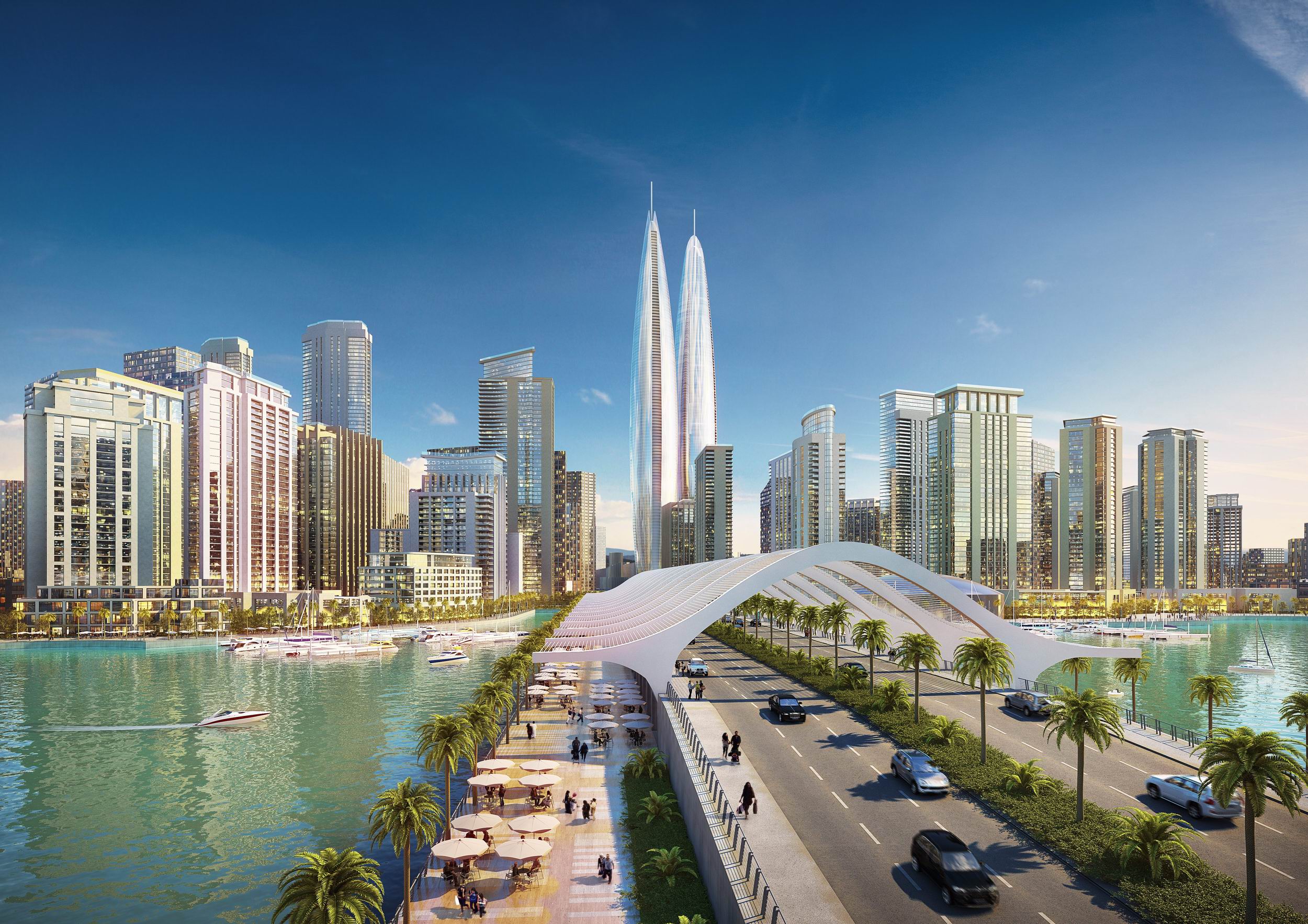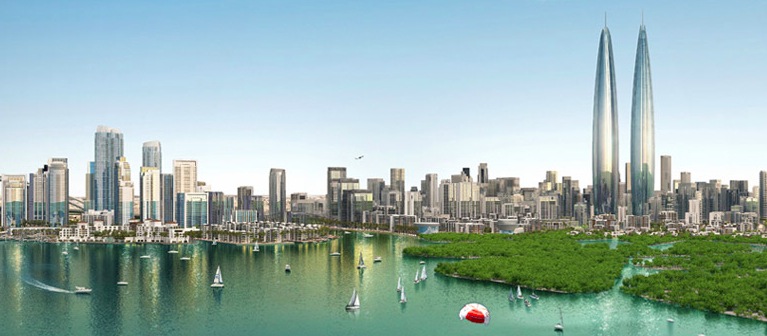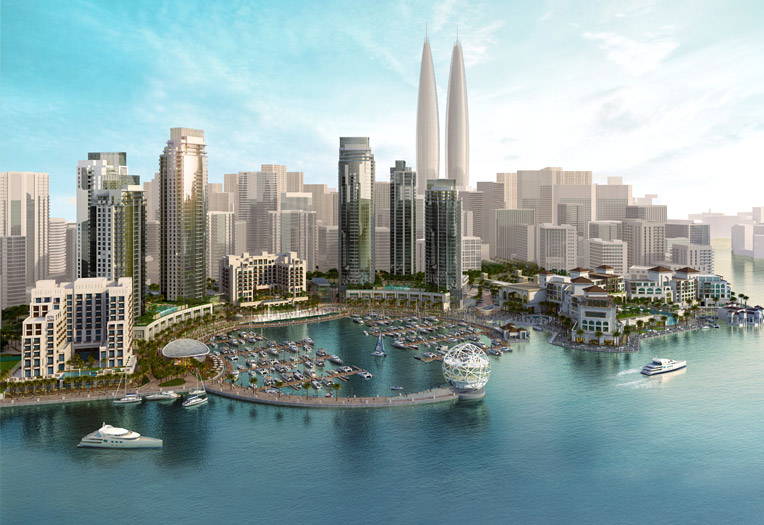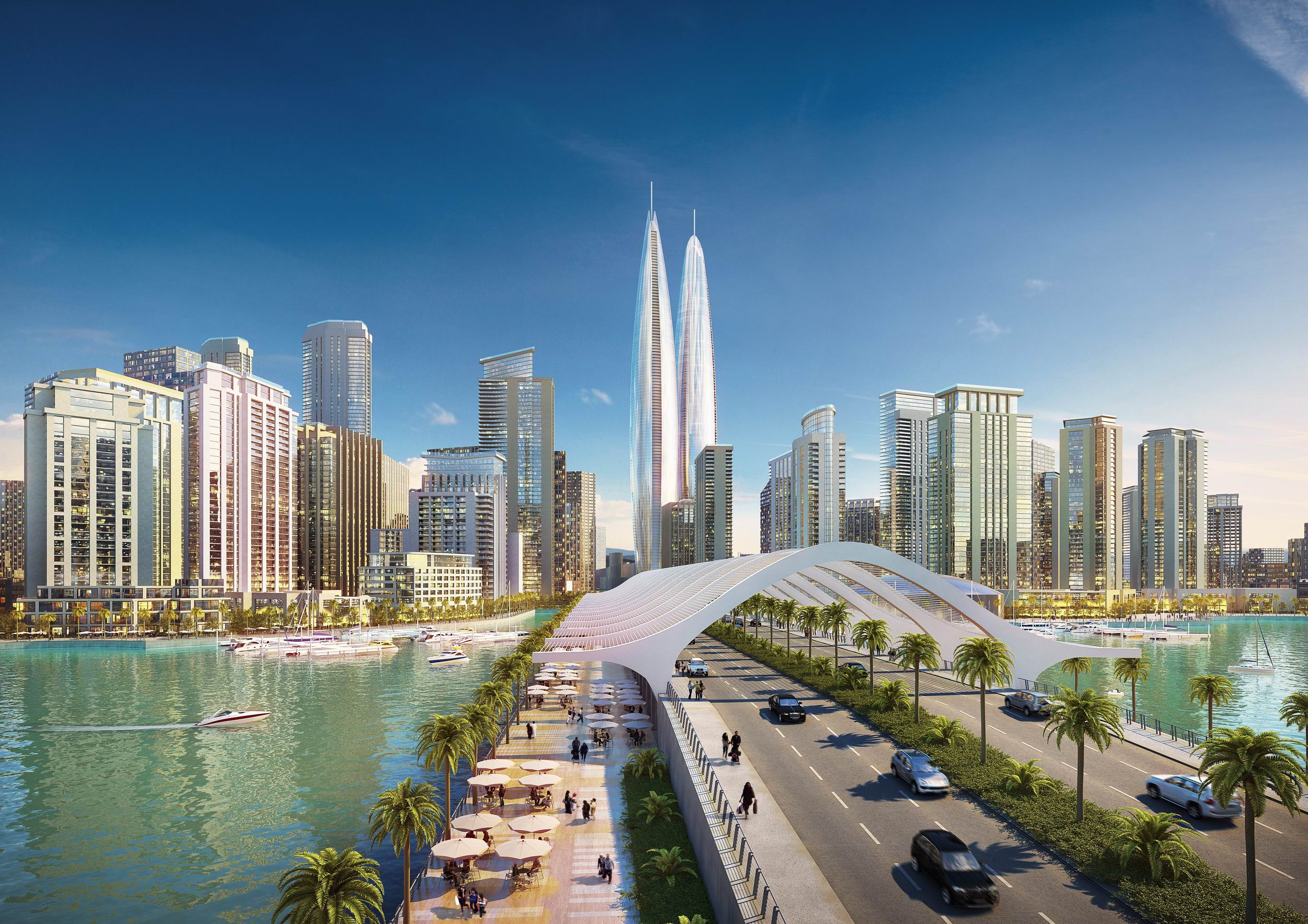Emaar Properties, known for its futuristic approach to buildings, has unveiled plans for a new project containing two towers that will top the charts in height, making them the world’s tallest towers once completed.
Dubai Creek Harbour will boast 39,000 homes and 22 hotels, making it three times the size of its downtown area, which contains the world’s tallest building, Burj Khalifa. Emaar Properties is partnering with Dubai Holding on this project.
Six towers, retail elements, and three hotels will round out Dubai Creek Residences, the first phase of the project, with the twin towers expected to be the centerpiece of the development. The six towers, which are 40 stories tall, will become waterfront properties, and contain one, two, and three bedroom apartments ranging from 880 to 2,154 sf. Dubai Creek Harbour as a whole will encompass 6 million sm (or 1,482 acres).
Starting November 1, apartments in two of the six towers will be available for sale on a first-come first-serve basis in the following locations: Dubai, Abu Dhabi, London, and Moscow.
Chairman of Emaar Properties, Mohamed Alabbar, told The National that the current market will be able to handle this magnitude of a project. “I think all the stakeholders in Dubai in this business learnt their lessons and have matured, the buyer, seller, bank, and regulator,” said Alabbar. “What is boils down to is supply and demand.”
Alabbar also commented to Dubai Holding that the vision of the project, “was to create a dynamic city of the future that integrates smart networks, while building on the cultural heritage of our city.”
Emaar Properties has not released information about the cost of the project, funding requirements, when ground will be broken, or the architect of the project.
For more information, visit www.emaar.com.
Related Stories
| Aug 11, 2010
ZweigWhite names its fastest-growing architecture, engineering, and environmental firms
Management consulting and research firm ZweigWhite has identified the 200 fastest-growing architecture, engineering, and environmental consulting firms in the U.S. and Canada for its annual ranking, The Zweig Letter Hot Firm List. This annual list features the design and environmental firms that have outperformed the economy and competitors to become industry leaders.
| Aug 11, 2010
SSOE, Fluor among nation's largest industrial building design firms
A ranking of the Top 75 Industrial Design Firms based on Building Design+Construction's 2009 Giants 300 survey. For more Giants 300 rankings, visit http://www.BDCnetwork.com/Giants
| Aug 11, 2010
Guggenheim to host live online discussion of Frank Lloyd Wright exhibition
The Solomon R. Guggenheim Museum launches the Guggenheim Forum, a new series of moderated online discussions among experts from a variety of fields that will occur in conjunction with major museum exhibitions.
| Aug 11, 2010
Best AEC Firms of 2011/12
Later this year, we will launch Best AEC Firms 2012. We’re looking for firms that create truly positive workplaces for their AEC professionals and support staff. Keep an eye on this page for entry information. +
| Aug 11, 2010
Report: Building codes and regulations impede progress toward uber-green buildings
The enthusiasm for super green Living Buildings continues unabated, but a key stumbling block to the growth of this highest level of green building performance is an existing set of codes and regulations. A new report by the Cascadia Region Green Building Council entitled "Code, Regulatory and Systemic Barriers Affecting Living Building Projects" presents a case for fundamental reassessment of building codes.
| Aug 11, 2010
Call for entries: Building enclosure design awards
The Boston Society of Architects and the Boston chapter of the Building Enclosure Council (BEC-Boston) have announced a High Performance Building award that will assess building enclosure innovation through the demonstrated design, construction, and operation of the building enclosure.
| Aug 11, 2010
Portland Cement Association offers blast resistant design guide for reinforced concrete structures
Developed for designers and engineers, "Blast Resistant Design Guide for Reinforced Concrete Structures" provides a practical treatment of the design of cast-in-place reinforced concrete structures to resist the effects of blast loads. It explains the principles of blast-resistant design, and how to determine the kind and degree of resistance a structure needs as well as how to specify the required materials and details.










